It’s summer in Norway and the turquoise waters of Styggevatnet glacier lake seem tranquil and inviting.
Then I dip my hand in and realise why our guide was so insistent that we paddle carefully to avoid tipping the kayak. As I pull my tingling hand from the frigid water, giving our kayak a good wobble in the process, I redouble my efforts on the paddling carefully front. There’s no way I want to go for a swim today.
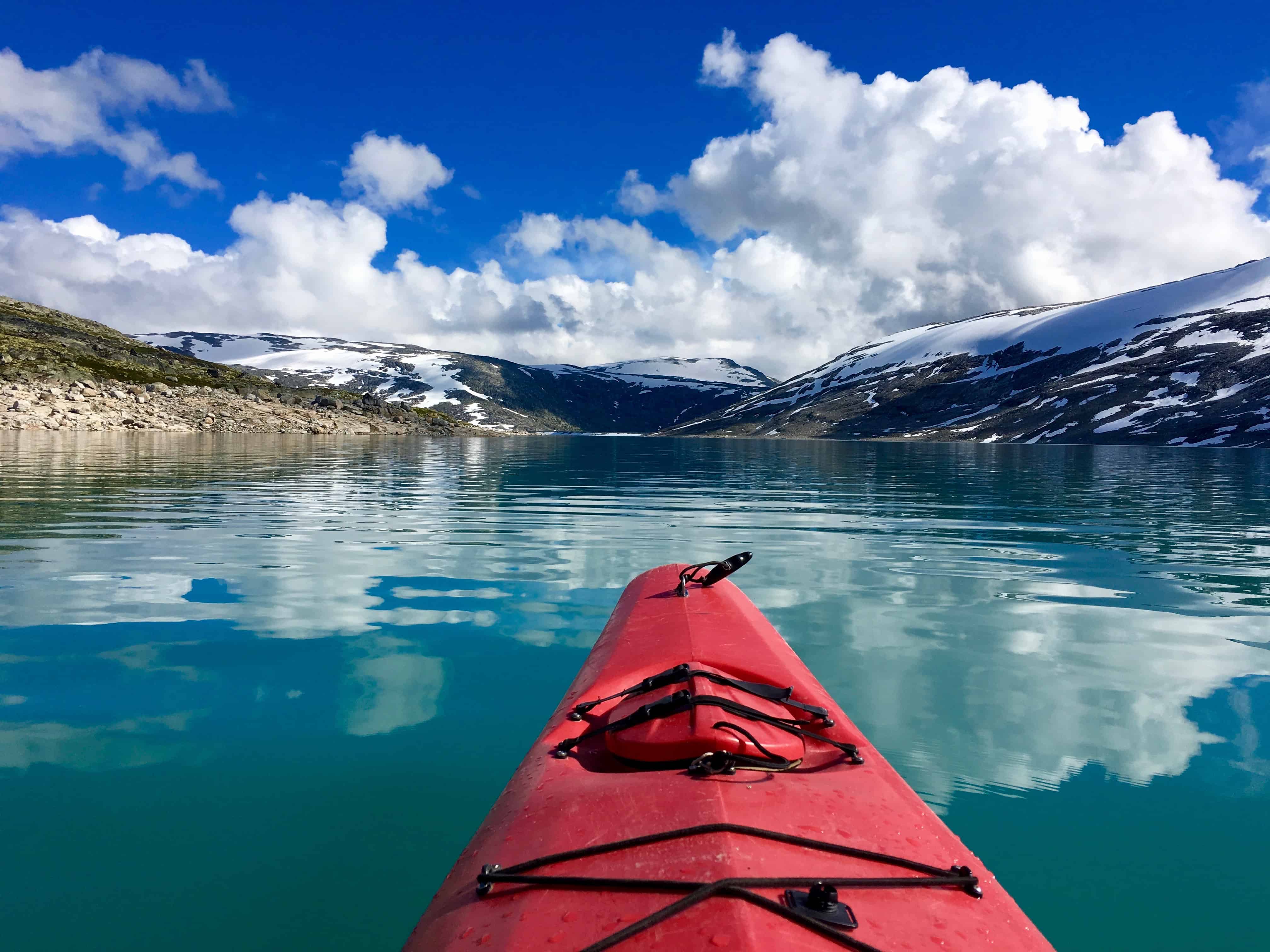
We’re paddling to Austdalsbreen glacier, one of fifty arms of the immense Jostedalsbreen glacier in western Norway. The largest on continental Europe, Jostedal covers some 487 square kilometres of the Jostedalsbreen National Park, and climbs to almost 2,000 metres above sea level.
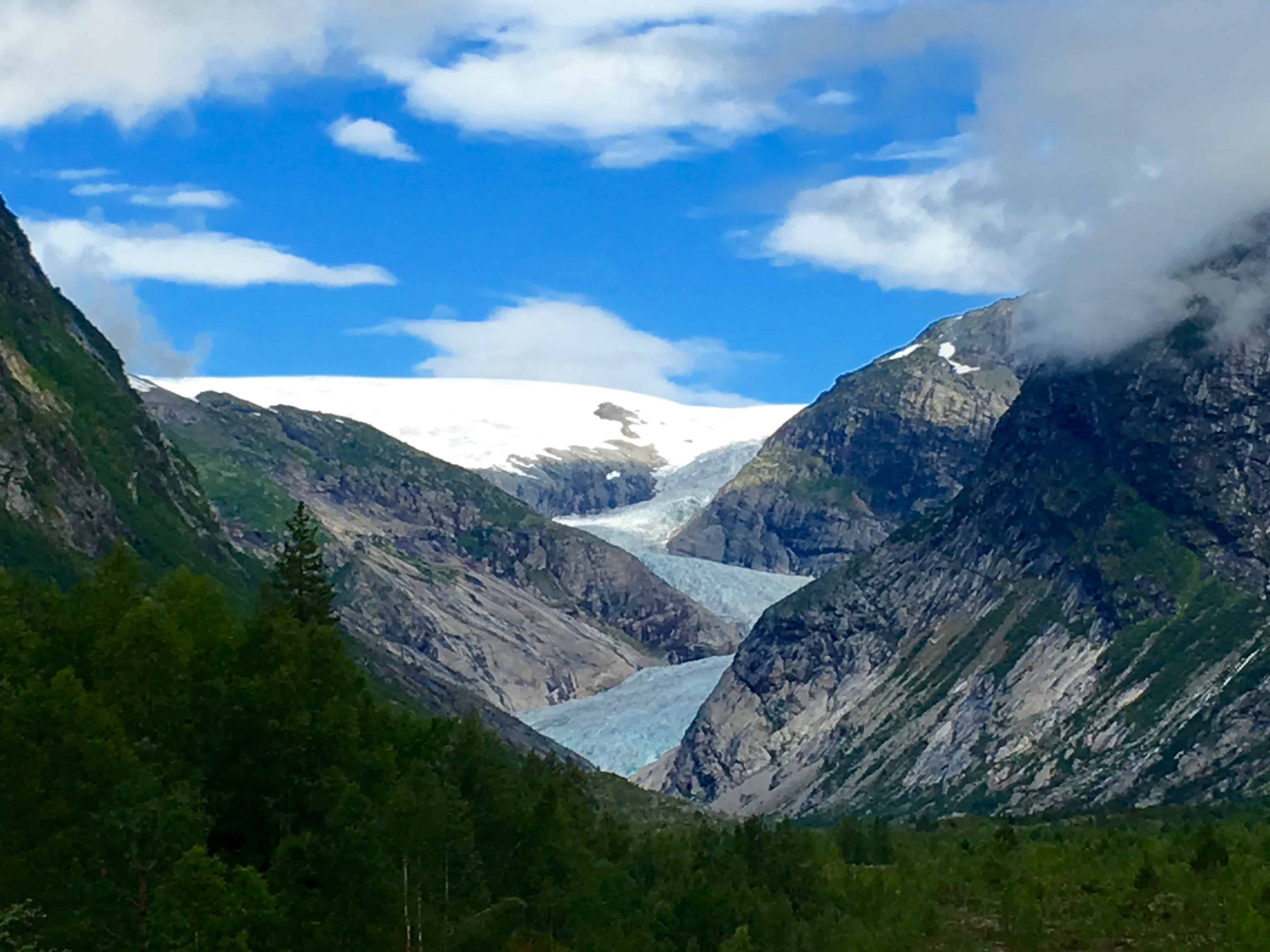
It’s an impressive, rugged, unforgiving landscape of ice and rock that’s chilly even in the height of summer. It’s twelve degrees when we visit and the weather runs the gamut of change throughout the day. It all adds to the otherworldliness of the place, and as we paddle in a tight group across the lake, I reflect on how lucky we are to be visiting this fragile, unspoilt wilderness.
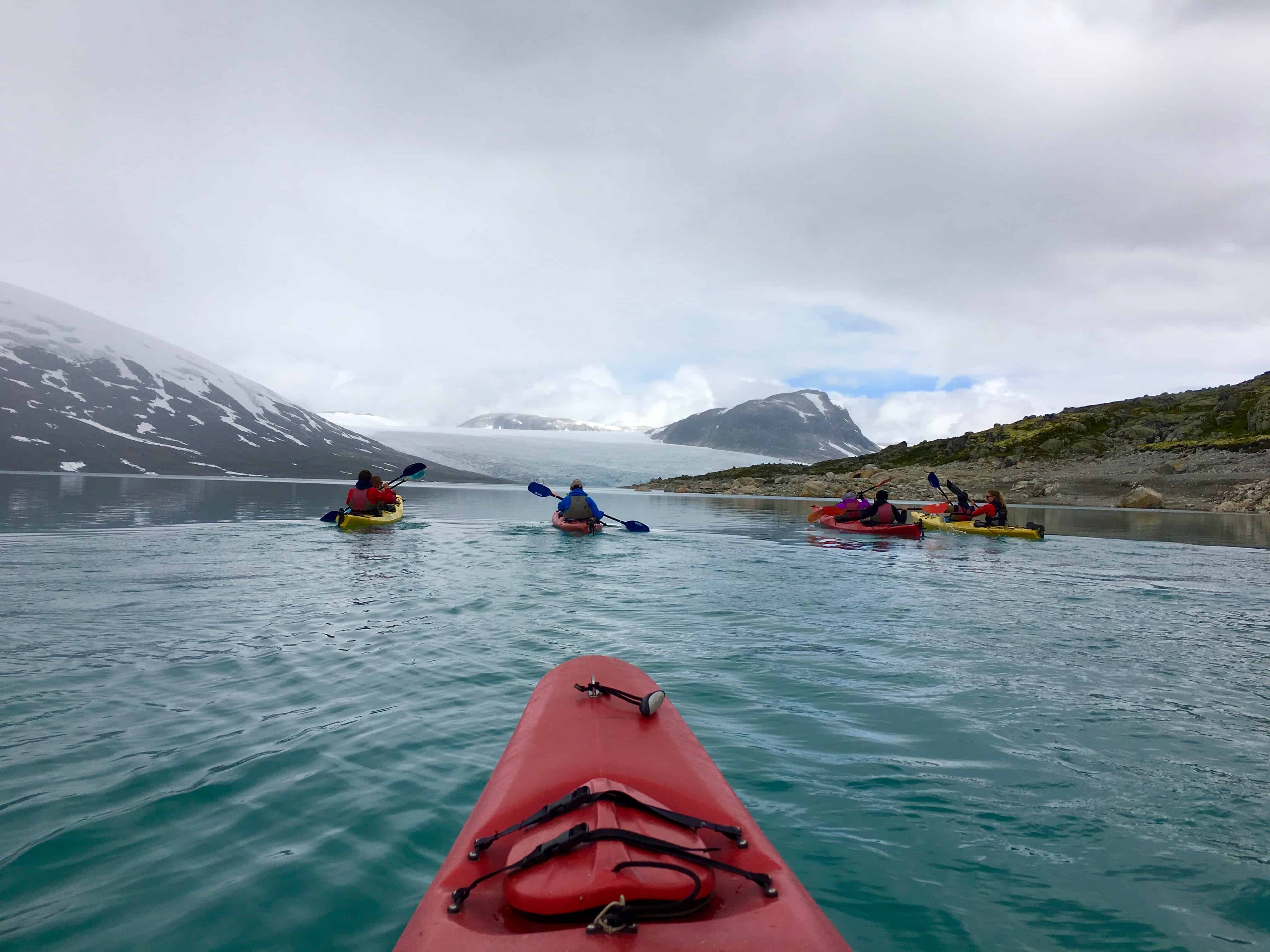
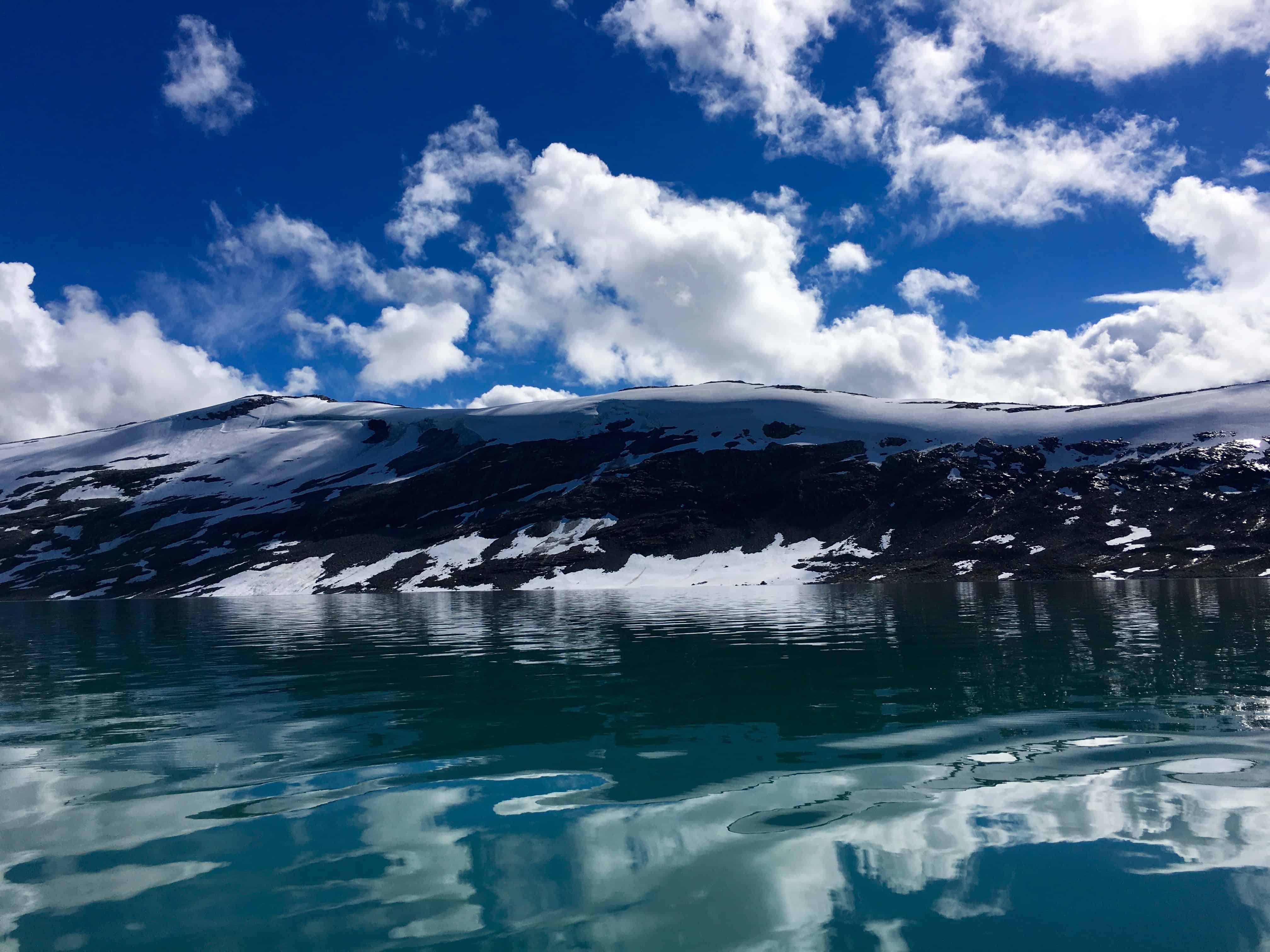
My reflections turn to sheer awe as we near the glacier terminus. Small icebergs float past, calvings from the 30-metre wall of white, grey and translucent blue ice in front of us.
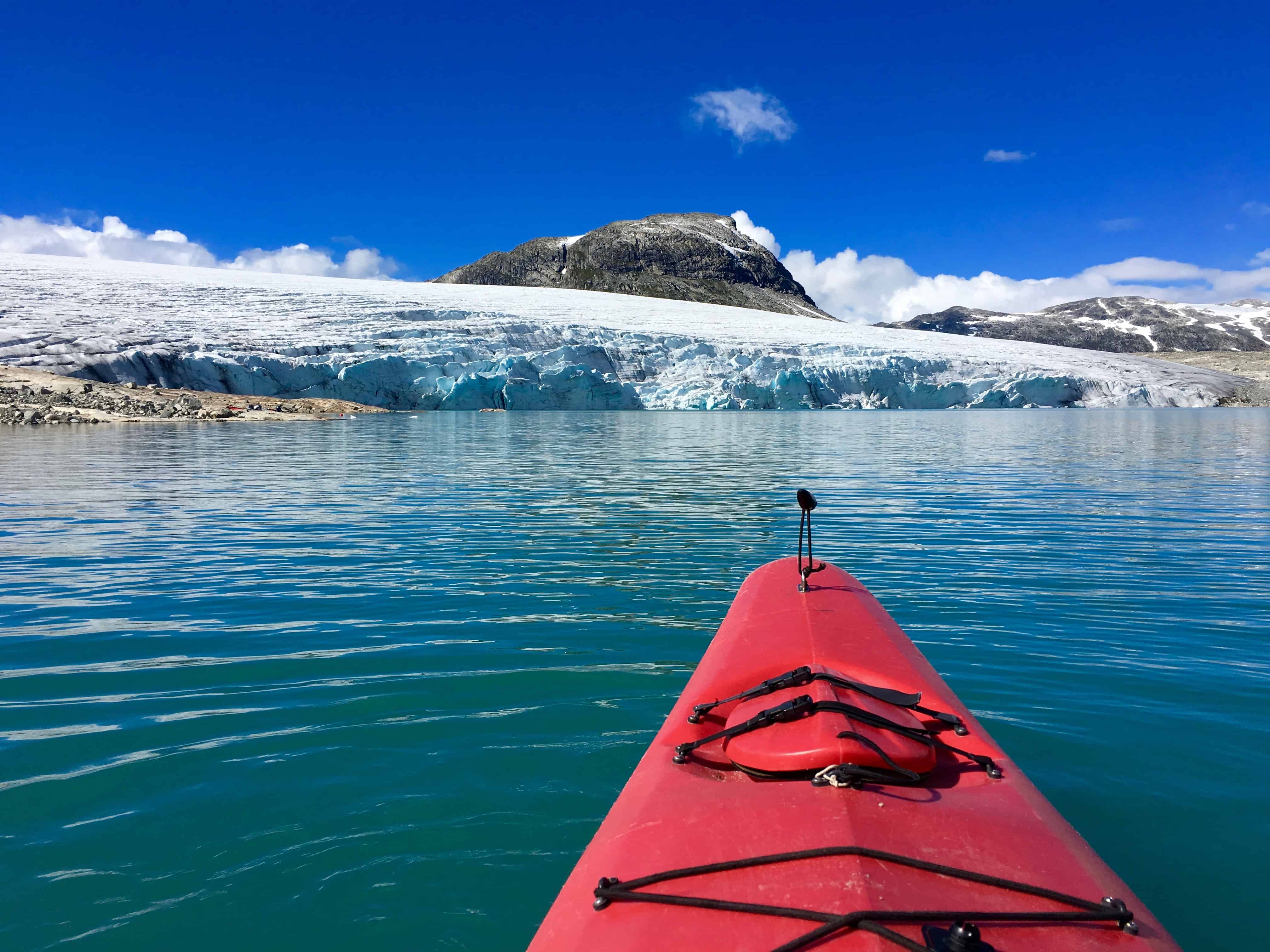
After clambering out of our kayaks, we haul them ashore and enjoy a brief lunch overlooking the glacier. A safety briefing from our guide, Leanne, preps us for the next stage of the adventure but first, we have to master what turns out to be the toughest task of the day. I thought getting in and out of the kayak was hard. It doesn’t compare to working out how to put crampons on our feet.
After a couple of false starts, the crampons are finally tied on, ice picks are in hand, and we’re split into two groups to be harnessed together via a very long rope before commencing our ascent up onto the glacier.
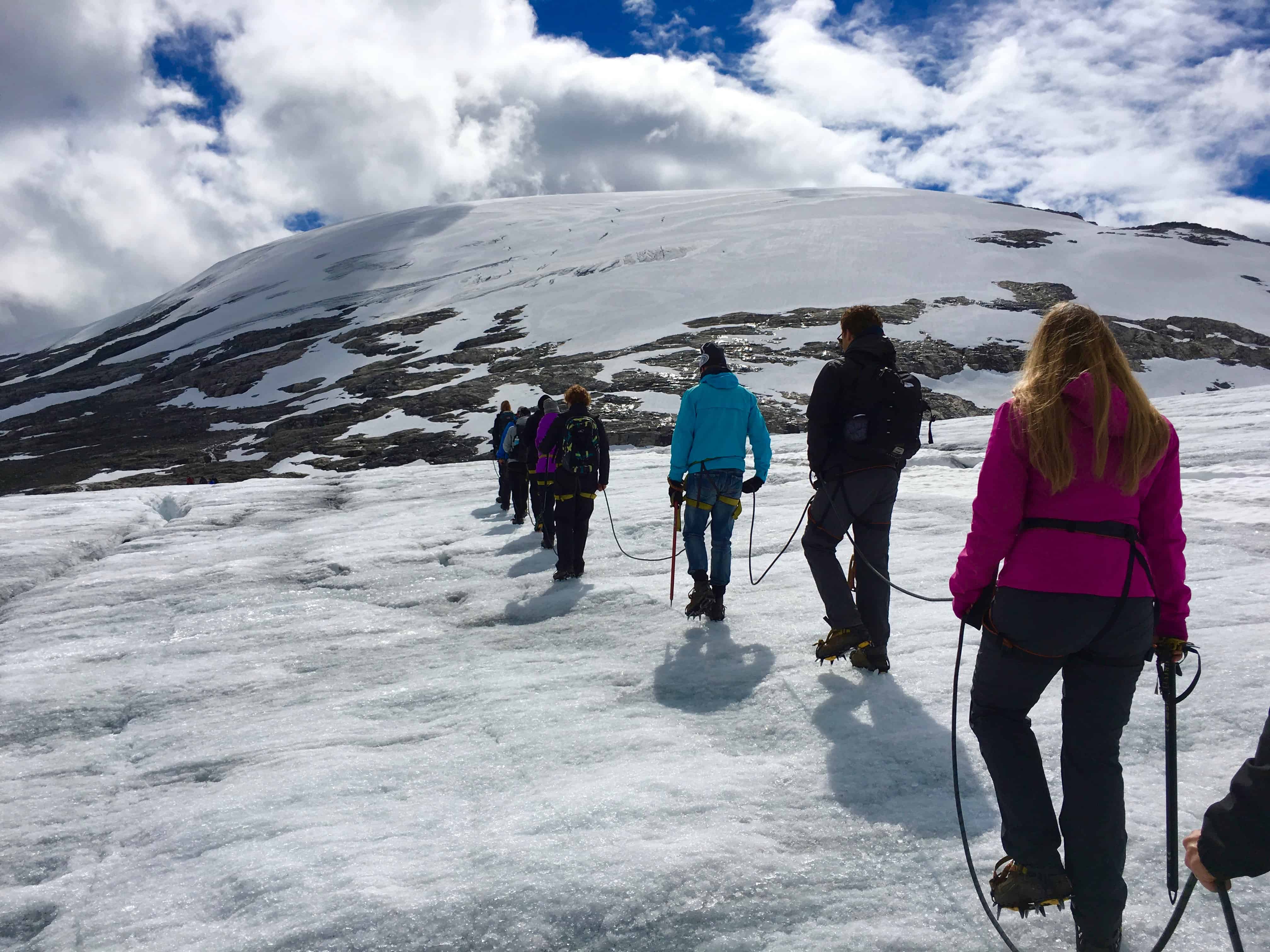
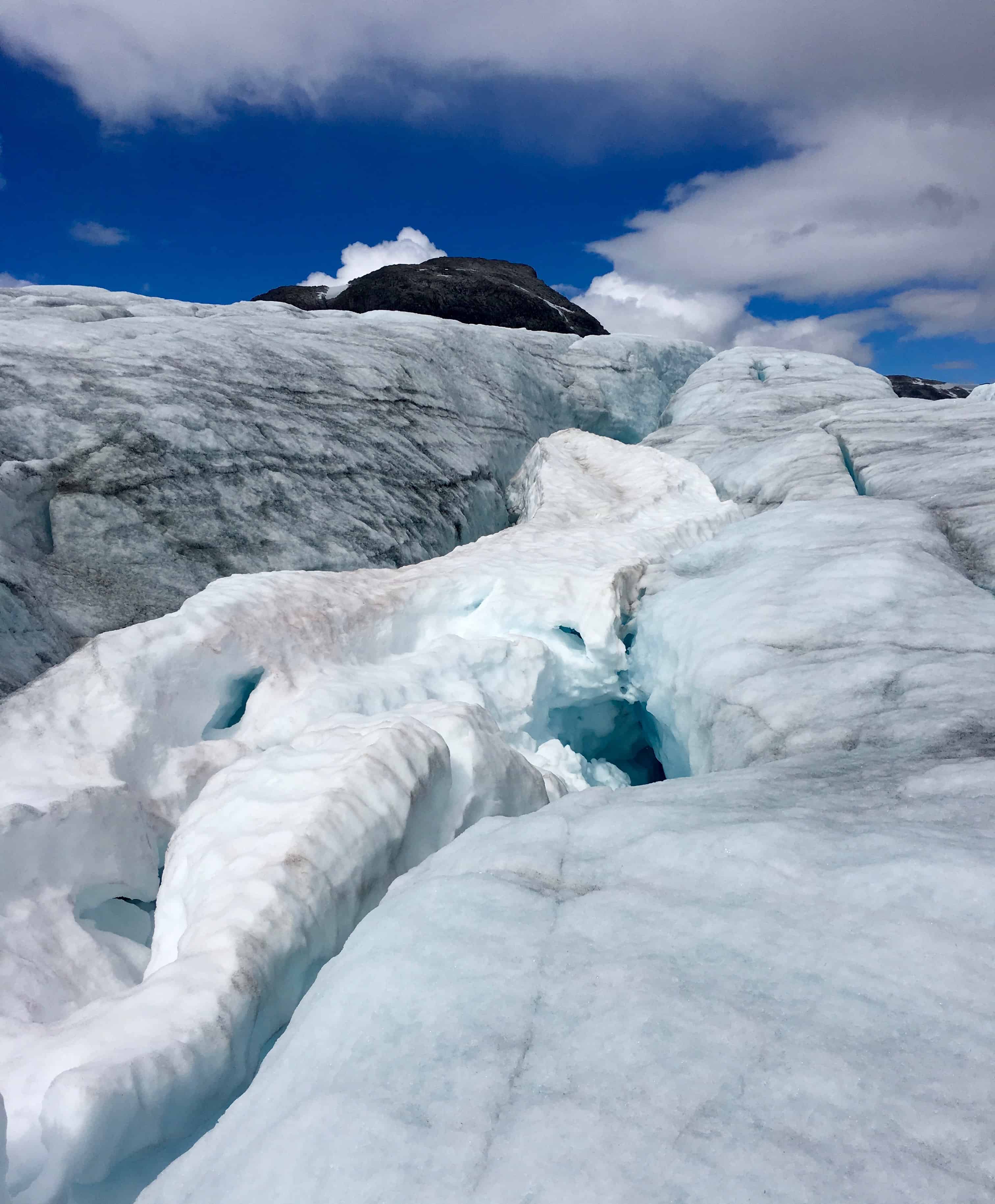
As bucket list experiences go, crunching our way up this colossal, bleak yet beautiful glacier, with its deep-blue crevasses, clear ice ponds and stunning views across the lake, is right up there.
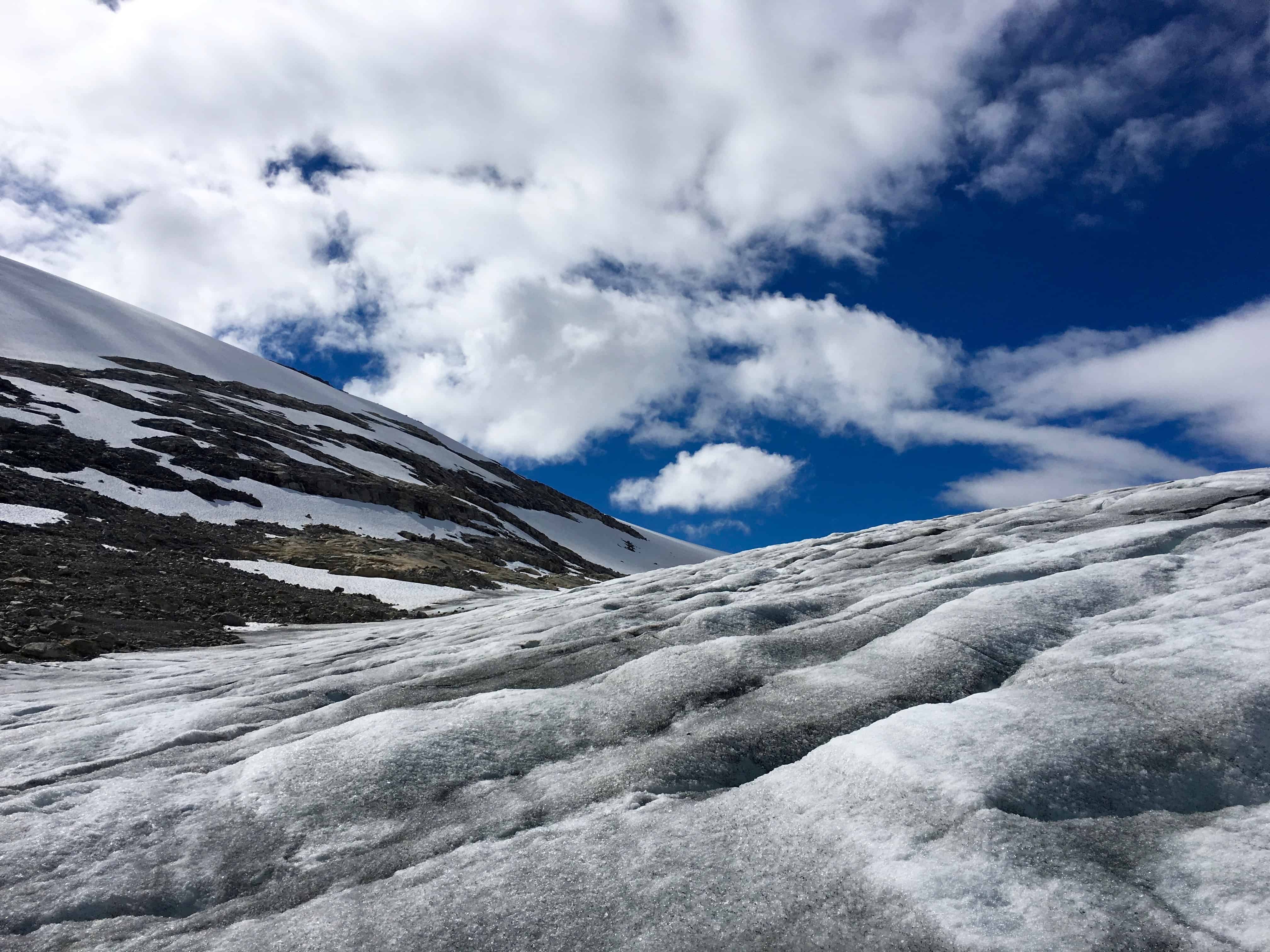
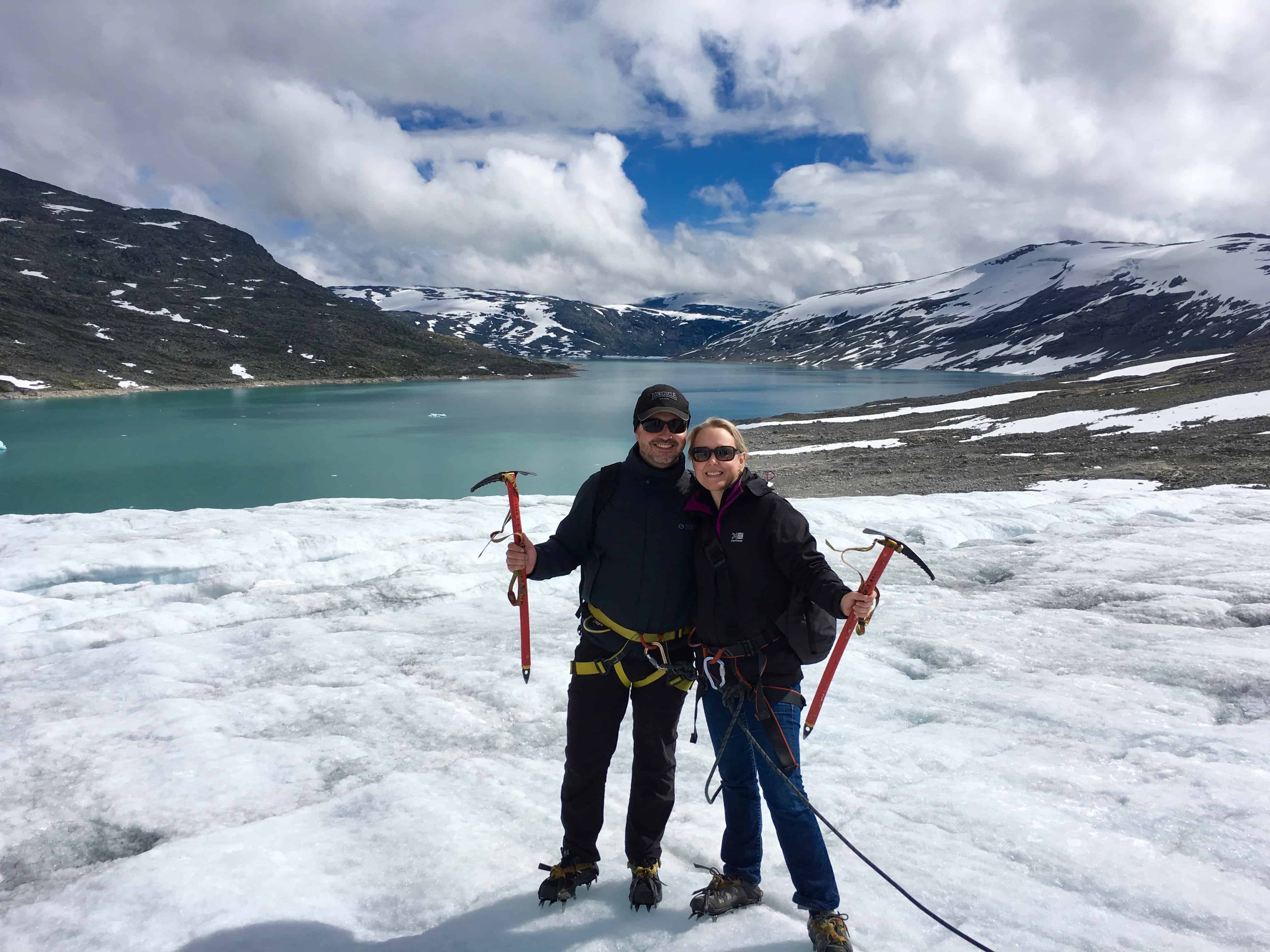
As we climb, Leanne talks us through the story of Jostedal and the glacier we’re standing on, its structures and its quirks. We line up to peer into some of the deep crevasses while our companions hold tight to our ropes. She points out frozen lemmings curled into small cracks in the ice, tiny victims of this harsh environment.
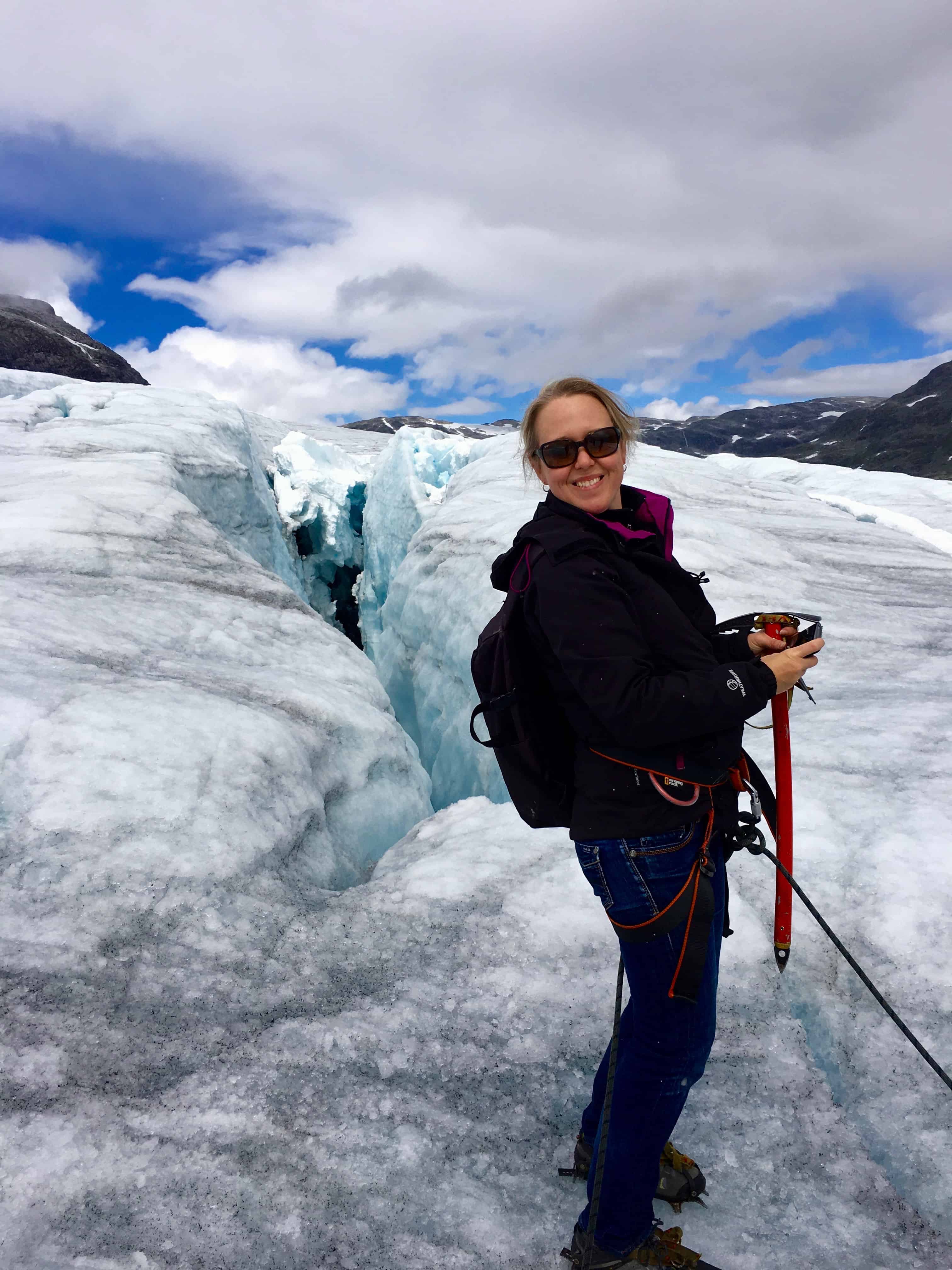
All too quickly, our 90-minute hike is up, just as the weather starts to roll in. We crunch our way back down to the kayaks and put a bit of arm into our paddle back across the lake before it gets too blustery on the mountain.
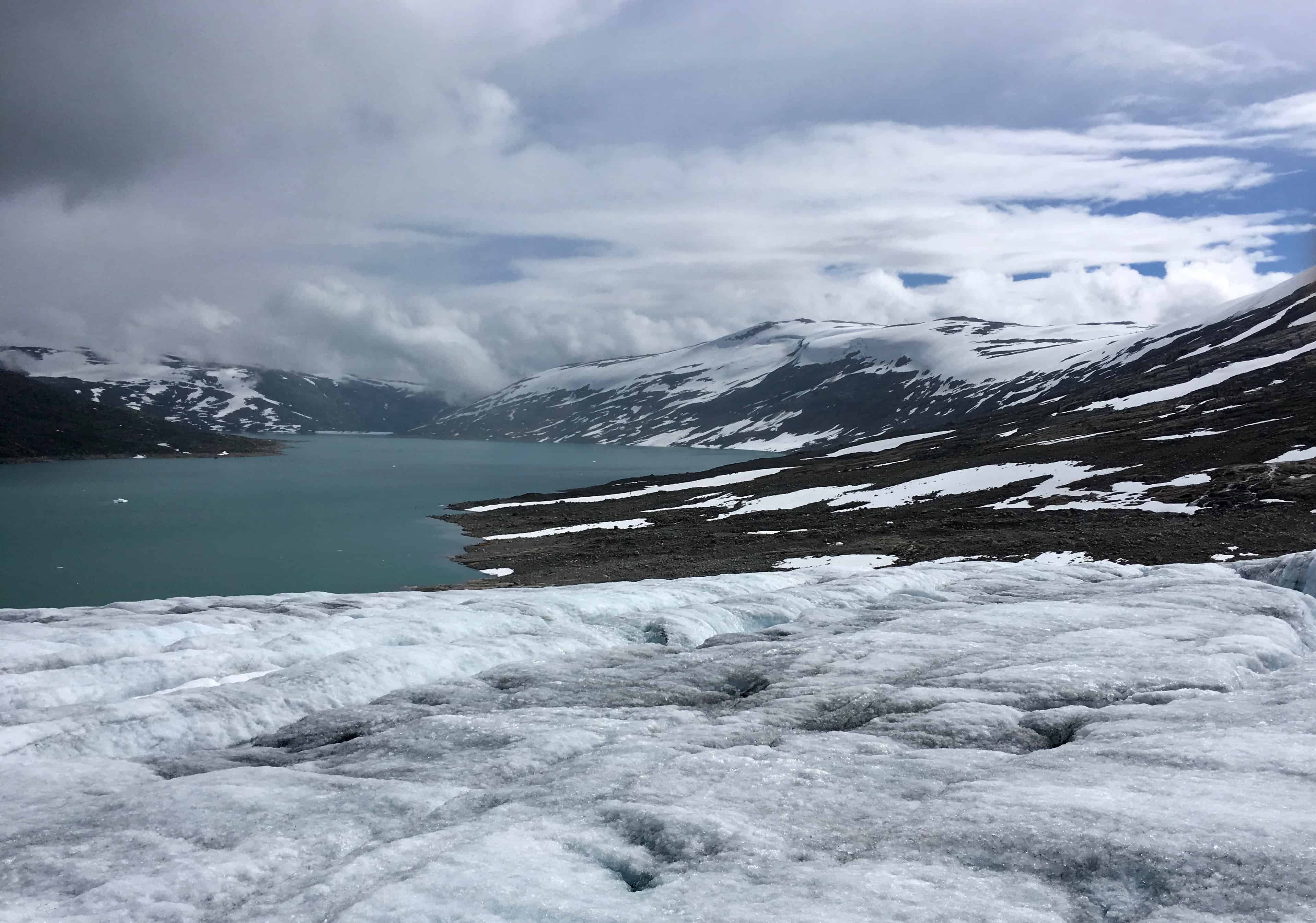
As we leave this stunning landscape, exhausted and exhilarated, clouds begin to swirl over the valley ahead and we’re left to ponder a very special experience in a rugged, beautiful and fragile environment.
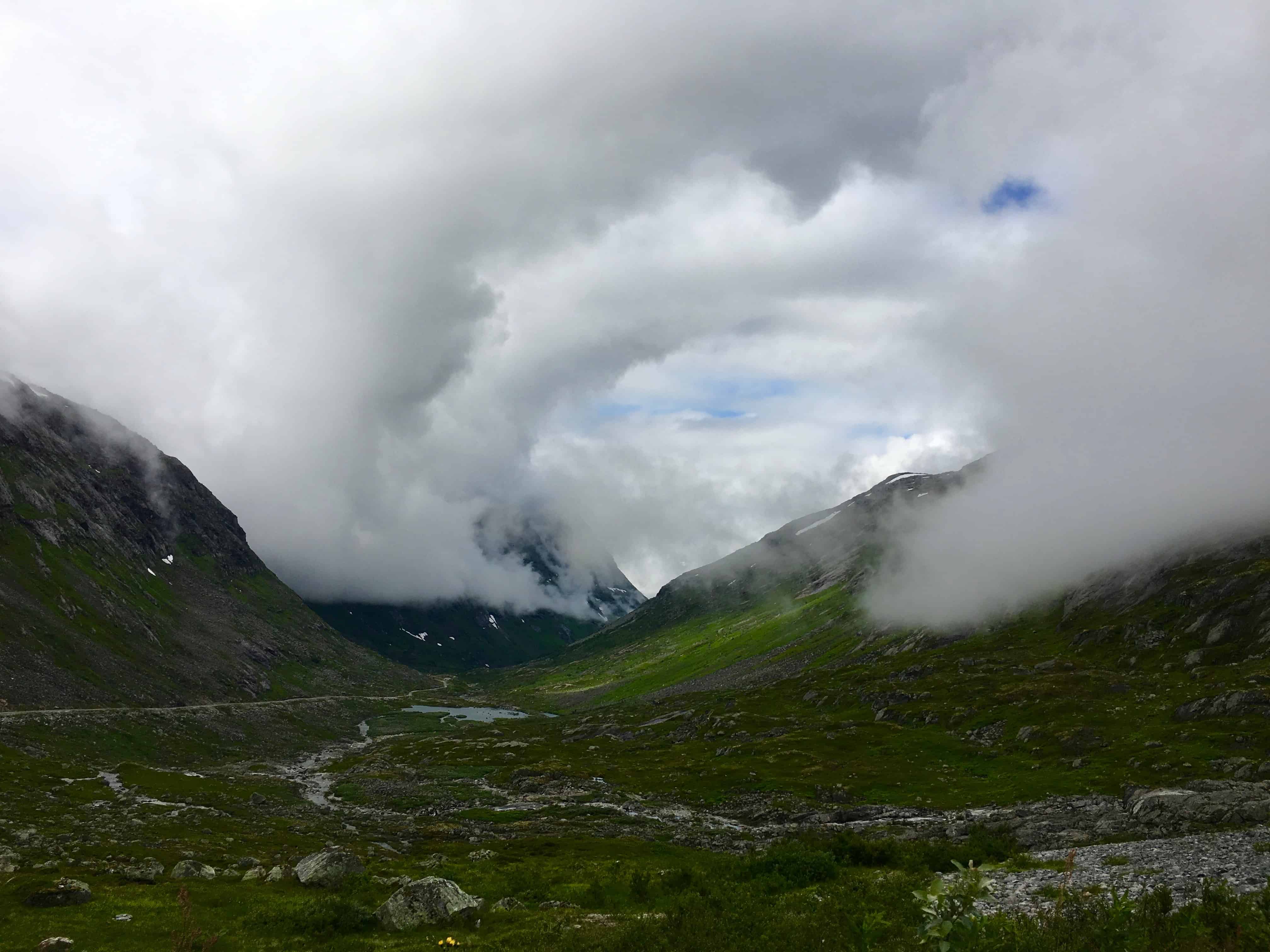
Good to know
Getting here: Ice Troll runs tours to the glacier starting from Breheimsenteret Glacier Centre, which is located in Jostedal, around an hour’s drive (62 kilometres) from Sogndal. From here, it’s another 30-40 minutes’ drive up to Styggevatnet glacier lake. You’ll need a vehicle for this trip.
When to go: Styggevatnet is covered by snow until early July, so this kayak-and-glacier-hike trip only runs between July and October. However, there are a range of glacier experiences year-round and operators take punters out to different arms of Jostedal glacier depending on weather and activity. Contact Ice Troll or one of the other operators in the area to see what’s available.
What to bring: Even in summer the weather on the glacier can be pretty changeable so bring plenty of layers, including jumpers, waterproof clothing, thermals, a warm hat and gloves. It’s also advisable to bring food for your journey and plastic bags to keep your backpack dry inside the kayak.
How hard is it? As the lake is quite placid, previous kayaking experience isn’t really necessary, although it’s an advantage. We were in double kayaks so we shared the effort. The kayaking portion of the trip is around an hour each way and isn’t particularly strenuous providing there’s no wind. Similarly, the glacier hike isn’t particularly strenuous as you go at a fairly slow pace. However, you do need to be comfortable in the crampons and able to walk up a fairly steady incline.
For more experiences and itineraries from spectacular Norway, head to our Norway page.
